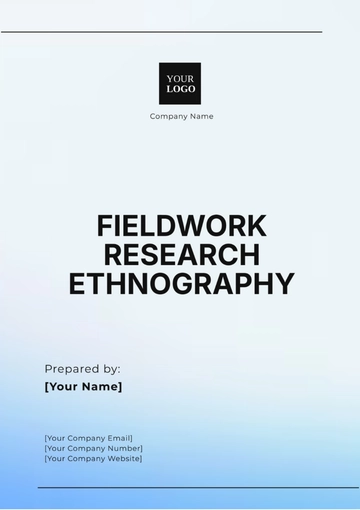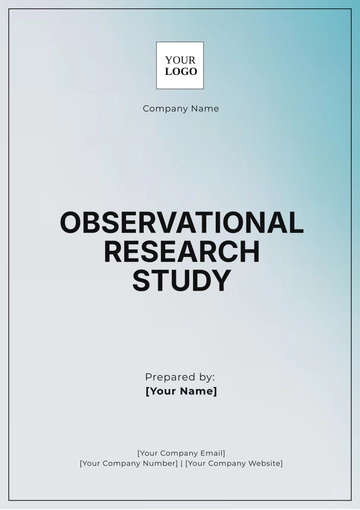Free Law Firm Legal Research

I. Introduction to Legal Research
Legal research is a cornerstone of effective legal practice, essential for crafting sound legal strategies and supporting compelling arguments. At [Your Company Name], we recognize that thorough research forms the bedrock of every successful case, enabling legal professionals to navigate complex legal landscapes with confidence. This document aims to provide an in-depth exploration of the components and methodologies central to legal research within a law firm setting.
Understanding the intricacies of legal research involves more than merely locating statutes and case law. It requires a structured approach to interpreting and applying legal principles in various contexts. This includes utilizing primary sources such as statutes, regulations, and judicial opinions, as well as secondary sources like legal journals, treatises, and practice guides. Each resource plays a unique role in building a comprehensive understanding of the legal issues at hand, ensuring that legal arguments are well-supported and in compliance with current laws and standards.
Effective legal research also demands familiarity with various research tools and databases, such as Westlaw, LexisNexis, and Bloomberg Law. Mastery of these resources is crucial for efficiently gathering relevant information and staying updated with evolving legal trends. By adopting a systematic and informed approach to legal research, legal professionals at [Your Company Name] can deliver well-reasoned advice and robust legal representation, ultimately driving better outcomes for their clients.
II. Types of Legal Research
This section categorizes the two main types of legal research: primary and secondary. It outlines how each type contributes to a comprehensive legal analysis, providing a framework for understanding the different resources and methodologies involved.
A. Primary Legal Research
Primary legal research is the process of identifying and analyzing the core legal documents that establish and govern legal standards. This includes:
Legislation (Statutes and Regulations): Statutes are laws enacted by legislative bodies, while regulations are rules issued by administrative agencies to implement statutory provisions. Both are critical for understanding the legal framework and requirements that apply to specific issues.
Case Law (Court Decisions): Judicial opinions provide interpretations of statutes, regulations, and constitutional provisions. These decisions, made by various levels of courts, help clarify and apply the law to specific facts, setting precedents for future cases.
Constitutions: The foundational legal documents of federal and state governments, constitutions establish the fundamental principles and structures of government and protect individual rights. Understanding constitutional provisions is essential for interpreting and applying other legal sources.
B. Secondary Legal Research
Secondary legal research involves using resources that provide analysis, commentary, and discussion on primary legal sources. These include:
Law Reviews and Journals: Scholarly publications that offer in-depth analysis of legal issues, case law, and legislation. They are valuable for understanding evolving legal theories and trends.
Legal Treatises: Comprehensive books that provide detailed explanations and interpretations of legal doctrines and principles. Treatises are often authored by experts and serve as authoritative references on specific areas of law.
Commentaries: Analytical works that interpret and critique legal texts, offering insights into their application and implications. Commentaries can be essential for understanding complex or ambiguous legal concepts.
Practice Manuals: Practical guides that provide procedural and substantive guidance for legal practice. These manuals are useful for practitioners seeking practical advice on handling specific legal tasks or issues.
III. Effective Legal Research Strategies
This section outlines key strategies for conducting efficient and thorough legal research. It covers how to identify relevant legal issues, utilize essential legal databases, and develop effective research queries. Mastery of these strategies is crucial for obtaining accurate and pertinent legal information, ultimately enhancing the quality of legal analysis and decision-making.
A. Identifying Legal Issues
Effective legal research starts with identifying relevant legal issues through:
Client Interviews: Engaging with clients to gather detailed information about their case. Understanding their perspectives and concerns helps pinpoint the core legal questions and factual context that need to be addressed.
Review of Case Documentation: Analyzing case files, contracts, correspondence, and other relevant documents to extract key facts and legal issues. Thorough review of these materials provides insights into the legal arguments and potential claims or defenses.
Precedent Analysis: Examining previous judicial decisions and legal precedents related to the case. Analyzing how similar issues were resolved in past cases helps identify applicable legal principles and predict potential outcomes, guiding the development of legal strategies.
B. Utilizing Legal Databases
Several databases are essential for legal research:
Westlaw
LexisNexis
HeinOnline
Google Scholar (for case law)
C. Developing Research Queries
Constructing effective research queries involves:
Using Boolean operators
Understanding keywords and phrases
Applying filters to narrow down search results
IV. Analyzing Legal Resources
Analyzing legal resources effectively requires a rigorous approach to evaluating both primary and secondary sources. Ensuring that primary sources are pertinent and authoritative involves assessing jurisdictional relevance, precedential impact, and the court level of decisions. Meanwhile, secondary sources must be scrutinized for the author's credibility, the timeliness of information, and any inherent bias. These steps are essential for securing reliable and pertinent legal information.
A. Evaluating Primary Sources
When analyzing primary legal sources, it is crucial to assess:
Jurisdiction Relevance: Determine if the legal source pertains to the relevant jurisdiction. Laws and case decisions are often specific to particular states or federal circuits, so understanding their geographical applicability is essential.
Precedential Value: Evaluate the influence of the legal source on current legal standards. This includes considering whether the case or statute sets a binding precedent or serves as persuasive authority in the jurisdiction.
Case Hierarchy and Court Levels: Recognize the court level at which the decision was made. Higher court rulings (e.g., appellate or Supreme Court) generally carry more weight than lower court decisions and can impact the interpretation of laws more significantly.
B. Critically Assessing Secondary Sources
When reviewing secondary sources, ensure:
Credibility and Authority of the Author: Verify the qualifications and expertise of the author. Sources authored by established legal scholars, practitioners, or reputable organizations are more reliable and informative.
Publication Date and Relevancy: Check the publication date to ensure the information is current and reflects recent legal developments. Outdated sources may not accurately reflect the latest legal standards or interpretations.
Objectivity and Bias: Assess the objectivity of the source. Evaluate whether the author presents a balanced view or if there is a discernible bias that could affect the analysis and conclusions provided.
V. Documentation and Citation
Accurate documentation and citation are critical for maintaining the integrity and credibility of legal research. Following established citation formats, such as Bluebook, APA, or MLA, ensures consistency and adherence to legal writing standards. Additionally, organizing research notes effectively, through methods like maintaining a research log and using digital tools such as Zotero or EndNote, enhances the efficiency of managing and retrieving information. These practices support thorough and reliable legal documentation.
A. Proper Citation Formats
Adhering to correct citation formats is vital for maintaining the credibility and clarity of legal writing. Key citation styles include:
Bluebook: The predominant citation system used in U.S. legal writing. It provides detailed rules for citing cases, statutes, regulations, and other legal documents, ensuring uniformity and precision in legal references.
APA (American Psychological Association): Commonly used in legal research that intersects with social sciences. It emphasizes clarity and consistency, providing guidelines for citing sources such as books, articles, and case studies.
MLA (Modern Language Association): Often used in humanities and some legal contexts. It offers a straightforward approach to citing a wide range of sources, including legal documents, ensuring that references are clear and accessible.
Each citation format serves a specific purpose and is tailored to different types of legal writing and research. Proper use of these formats enhances the professionalism and reliability of legal documents.
B. Organizing Research Notes
Effective note-taking strategies include:
Keeping a research log
Highlighting key points and quotes
Utilizing digital tools for organization (e.g., Zotero, EndNote)
VI. Practical Application
Applying legal research effectively is crucial for both drafting legal documents and preparing for litigation. Crafting legal memoranda involves clearly summarizing issues, analyzing relevant laws, and applying findings to case specifics to draw actionable conclusions. In litigation preparation, thorough research on precedents, developing strong arguments, and anticipating counterarguments ensure robust case preparation. Mastery of these applications is essential for effective legal practice and successful outcomes in court.
A. Drafting Legal Memoranda
Drafting effective legal memoranda involves a meticulous approach to presenting research findings. Key components include:
Summary of Issues: Clearly outline the legal questions or issues being addressed, providing a concise overview of the context and scope.
Analysis of Relevant Law: Thoroughly examine and interpret applicable statutes, case law, and regulations. This section should include detailed analysis of how the law applies to the issues at hand.
Application to Specific Facts: Apply the legal analysis to the particular facts of the case, demonstrating how the legal principles influence or resolve the specific issues.
Conclusion and Recommendations: Offer a well-reasoned conclusion based on the analysis and application. Provide actionable recommendations or potential courses of action, ensuring that they are grounded in the research and analysis conducted.
B. Preparing for Court Cases
When preparing for litigation, attorneys must:
Compile comprehensive research on legal precedents
Develop compelling arguments based on thorough research
Anticipate counterarguments and prepare rebuttals
VII. References
This section lists key resources for legal research and writing, providing foundational texts that support and enhance legal scholarship. Each reference offers valuable insights and guidance on various aspects of legal research and writing, from fundamental principles to detailed methodologies. Proper citation of these sources ensures credibility and allows for further exploration of the topics covered.
Source | Citation |
|---|---|
Legal Research in a Nutshell | Statsky, W. P. (2000). Legal Research in a Nutshell. West Publishing. |
Introduction to Legal Research and Writing | Harvey, G. (2018). Introduction to Legal Research and Writing. Wolters Kluwer. |
The Elements of Legal Writing | Meyer, M. D. (2004). The Elements of Legal Writing. Schaum's Outlines. |
Effective legal research is fundamental to the practice of law, enabling practitioners to build strong cases, craft well-supported arguments, and ensure compliance with legal standards. By mastering the methodologies outlined in this document—ranging from identifying legal issues and utilizing databases to properly documenting and citing sources—legal professionals can enhance their research efficiency and accuracy. The references provided serve as essential resources for further study and application. Commitment to thorough and precise research ultimately supports the delivery of high-quality legal services and fosters a deeper understanding of complex legal issues, contributing to successful outcomes in legal practice.
- 100% Customizable, free editor
- Access 1 Million+ Templates, photo’s & graphics
- Download or share as a template
- Click and replace photos, graphics, text, backgrounds
- Resize, crop, AI write & more
- Access advanced editor
Conduct thorough analysis with the Law Firm Legal Research Template from Template.net. This editable and customizable template helps you organize and document legal research findings effectively. Fully editable in our Ai Editor Tool, it offers a professional and structured format to streamline your legal research process and present comprehensive insights.





























